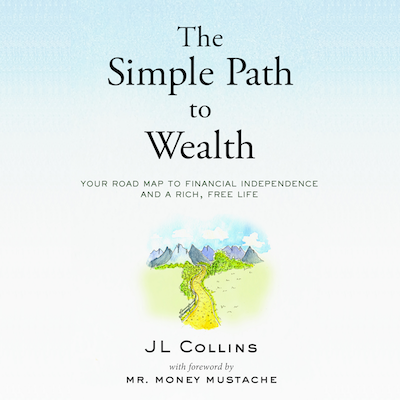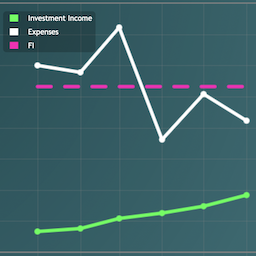Let’s all step into the Mad Fientist laboratory for a minute to run a little experiment…
I’m going to give you a couple of scenarios and you just have to quickly choose one option and then move on to the next scenario.
Imagine you are the head of the US Center for Disease Control and a deadly disease breaks out.
There has been been an outbreak on two separate islands and there are two courses of action you can take on each island that will affect how many people survive the outbreak.
Island #1
On island #1, if program A is adopted, 270 people will die.
If program B is adopted, there is a 40% chance that no one will die and a 60% chance that all 450 people on the island will die.
Island #2
Programs A and B can’t be implemented on island #2 so you have to instead choose between programs C and D.
If program C is adopted, 180 people will be saved.
If program D is adopted, there is a 2/5 chance all 450 people on the island will be saved and a 3/5 chance that nobody will be saved.
Selections
Did you choose programs B and C?
When this experiment is conducted in an actual laboratory, the vast majority of people choose program B over program A and program C over program D.
So what’s the point?
Let’s take a closer look at these scenarios again. The expected values of the programs are actually exactly the same for all four programs. For program A, 180 out of 450 people will be saved. For program B, the expected value is (2/5 * 450) + (3/5 * 0) = 180 saved.
Now if you also take a closer look and compare the two scenarios, you’ll see that programs C and D are exactly the same as programs A and B, respectively. For program A, 270 people will die so 180 people will survive, which is the same as program C. For program B, there is a 2/5 chance everyone will survive and a 3/5 chance everyone will die, just as in program D.
So all programs are equal in terms of effectiveness, programs A and C are exactly the same, and programs B and D are exactly the same.
So why is it most people choose to gamble in the first scenario (program B) but choose the sure thing in the second scenario (program C)?
It’s all about how the outcomes are framed and how we feel about risk and loss.
Framing, Loss-Aversion, and Risk
If the problem is framed as a loss, as it is in the island #1 scenario (focusing on the people who die rather than the people who live), we become risk-seeking. Since 270 people would definitely die if we choose program A, we’d rather risk killing everyone for the chance of saving those 270 people.
If the problem is framed as a gain, however, as it is in the island #2 scenario (focusing on the people that will be saved), we become risk-averse. We want to protect our gains (in this case, the saving of 180 people) so the majority of us would choose program C to avoid the risk of losing those 180 if we instead chose program D.
So simply by framing the same exact outcomes in different ways, we’ve altered the decisions of the majority of the population.
How does this apply to finances?
So why am I making you put islanders lives at risk? To illustrate that your brain often affects your decision-making without you consciously being aware of it.
You may feel that you are smarter than other people and that you are able to make logical decisions when it comes to your finances but these subtle quirks of your mind influence every decision you make.
Anchoring
Let me present to you another study to further reinforce this point.
We’ve all probably heard of Gandhi. If you close your eyes, you can maybe even picture him. Since the image is likely an image of him shortly before his death, you’d most likely do reasonably well guessing how old he was when he died.
If before asking you how old you think Gandhi was when he died, I ask, “Did Gandhi live to be 140”, you’d probably laugh at my stupidity and say, “No, that’s ridiculous.”
If before asking you how old you think Gandhi was when he died, I ask, “Did Gandhi live to be 9”, you’d probably also laugh at my stupidity and say, “Absolutely!”
Neither of the responses to these two ridiculous questions is surprising. What is surprising, however, is how the responses to the “How old was Gandhi when he died” question are affected when you precede the question with one of the two ridiculous questions just mentioned.
When asked, “Did Gandhi live to be 140” before being asked how old he was when he died, participants answered, on average, that he was ~67 when he died.
When participants were instead asked, “Did Gandhi live to be 9” before being asked how old he was when he died, participants answered, on average, that he was ~50 when he died.
In this experiment, the ridiculous scenarios, even though they were far-fetched, served as anchors that ultimately affected the answers to the question about Gandhi’s age at death.
It’s not hard to see how this type of anchoring could affect your financial decision-making. If all the talking heads on CNBC are saying the Dow’s going to go to 18,000 by year’s end, an anchor is set in your mind that could potentially affect your view of the market and subsequently, your interactions with the market.
Other Examples
The bad news doesn’t stop at framing and anchoring, however. There’s also confirmation bias (the idea that we tend to place more weight on opinions that we agree with and discount or disregard information that we don’t agree with), illusory superiority (~80% the population believes they are above-average drivers), and many, many more.
How can you save yourself from yourself?
So what’s the solution?
My advice is to try to take your brain out of the investing equation as much as possible. I know that probably sounds like the worst investing advice ever but let me explain…
Your brain is useful when setting up an investment plan but it’s not useful when you execute that plan (for the reasons mentioned above).
I invest the majority of my portfolio in a total stock market index fund. This simple strategy has allowed me to take my brain out of the “what” question completely when it comes time to invest. I don’t spend hours agonizing over which stock to invest in this month and therefore, I don’t let all of the external factors present in the world unconsciously influence my decisions.
You can also take your brain out of the “when” question as well. To do so, set up an automated investment plan that automatically invests a certain amount of money every month.
Automating your investments will further decrease the possibility of your brain sabotaging your investing plan and will allow you to consistently invest your money as soon as it’s available to invest.
Cognition
This post was inspired by a course on cognitive psychology and cognitive neuroscience I just completed for my free Ivy League degree.
Learning more about how the brain works has inspired me to further investigate what causes us to make the sub-optimal financial decisions that we do.
I am currently in the process of researching game theory, behavioral game theory, and behavioral finance to better understand decision-making in competitive environments and why so many of us do not make good decisions in these types of situations. Look out for more articles on these topics in the future!




Fantastic post!
The book club book of the month over on the Mr. Money Mustache forums this month is Predictably Irrational by Dan Ariely, which talks a lot about these types of biases (including the anchoring effect). You should check it out from your local library if you haven’t read it. It’s a very quick read, and the chapter on “closing doors” versus keeping your options open is stunning.
I also just finished reading You Are Not So Smart, another book dealing with the same thing.
The psychology of things like this is quite interesting, and finding out about it to call yourself out (and have other call you out) when it happens is quite useful.
Great post.
Perfect timing with your book suggestions! I’m currently putting my tentative bibliography together for my thesis proposal and since I plan to research these types of topics, I will definitely add the two you recommended to the list.
The psychology of decision-making is very interesting and as you said, it is a useful topic to study, if only so you can understand your limitations and recognize when some of these biases are affecting your decision-making.
Nice post. The human mind is an amazing thing. When it comes to investing, I’ve set a desired asset allocation. Of course, my brain almost always gets in the way when it comes to execution. As your post suggests, I just need to get out of my own way and rely on my plan. Thanks for another good post.
Thanks, Prob8. I feel your pain. My biggest problem is that I usually have too much of my money in cash because my stupid brain doesn’t let me pull the trigger when I should. I always want to wait for a pullback so that I can get a better “deal” but it’s so stupid to wait because the market is more likely to go up than down (as our friend Jim nicely describes in this post).
I have one more account that I need to set up an automated investment plan for and then hopefully my brain will stay out of the execution altogether.
While clearly solutions B and D are exactly the same. I disagree that A and C are necessarily the same. Program A guarantees that “270 will die” it does not say anything about the result of other 180 people. We have no info on the probability of their deaths. Logically, if any number of people between 270 and all 450 people die the condition that ” 270 people will die” has been fulfilled. The same can be said of program C any where from 180 to 450 will be saved. Thus only in the absolute worst case are they the same. In any other case C is better.
However I choose B and D due to my own personal morality.
I could have worded it differently but since I specified probabilities for B and D but didn’t for A and C, I figured that implied that the people that didn’t die would definitely live, and vise versa.
In the actual experiment, participants would only be asked one of the questions so this experiment here was more for fun than anything else. The results of the actual experiment are what’s interesting.
Great post! I think a huge part of financial success is understanding how the mind works against us when it comes to saving and investing. Have you read “The Psychology of Human Misjudgement” by Charlie Munger? A non-psychologist but a successful businessman, he observed a number of psychological tendencies that lead even the most astute people into trouble. What he calls Deprival Suppereaction Tendency explains the power of loss aversion, and Influence by Mere Association Tendency explains confirmation bias. Not surprisingly, Charlie has also advocated index funds for individual investors so they can avoid the problems faced by making the wrong decisions with their money. Decide your allocation and your contribution then sit on your ass. Simple yet powerful advice. Thanks again.
Thanks, Dan!
I haven’t read that book yet but I just added it to my reading list so I’ll be sure to let you know what I think of it after I read it. It sounds really interesting so I appreciate the recommendation!
I chose A & C… does that make me a psychopath?
Haha, no I think it means you’re not a gambler and not as influenced by loss-aversion!
I love this stuff; non-intuitive results is such a validation of the science! Do you have any examples involving conditional probability? I run risked economic models all day long and yet even my coworkers won’t touch that particular tool (presumably because of its counterintuitive nature). It’s interesting how few comments this topic has received, perhaps another topic worth researching.
This is actually my favorite twist on the Monty Hall (3 doors, 1 prize) game: Two teams are both allowed to choose a door (and they cannot choose the same door). After choosing, the host eliminates one of the teams who has chosen the wrong door. Assuming you are on the surviving team, should you switch doors or stay?
I chose A & C – does that make me abnormal? I’m personally very risk averse. I would rather have $1 than a chance to win $1,000,000. The $1 is a sure thing and the $1,000,000 usually has low statistical odds of being won (i.e. lotteries). I find anchoring bias really annoying for memory, though. I’ll be having a conversation and a decision will be reached but then it will be revised. After said conversation I will remember the first decision rather than the revision. If I’m reminded of the second decision only then do I recall it.
Great post. Thanks for sharing. Another great read on this topic is the book, Blind Spot.
Hey Mad Fientist, I’m recently a new subscriber to your site and have so far thoroughly enjoyed your articles. This article in particular touches on a subject that I find fascinating. I recently read a book by Daniel Kahneman titled “Thinking, Fast and Slow” where he goes into depth on the topics of cognitive bias, decision-making heuristics, etc. If you haven’t already read it, I highly recommend it. Along the same vein, Gary Klein wrote a book titled “Sources of Power: How People Make Decisions” where he talks about intuitive decision-making and his “Recognition Primed Decision-Making Model”. This one is also a great read (although a little dry at times) and very interesting.
Anyway, great content! Keep it coming!
I chose A.
I guess that makes me a bad person…
:P
Restaurants frame and anchor their wine lists: when looking at the menu and thinking “I want a single glass of red wine”, the frame usually includes about six wine options for plus or minus $x, and one fancy option at the end for $3x.
This reminds us they are fancy, makes us feel that $x is a reasonable price in comparison to $3x and so extracts more orders from us.